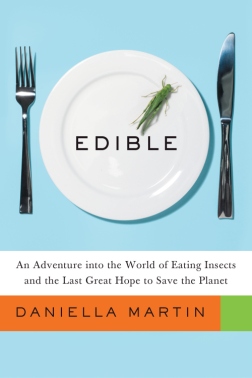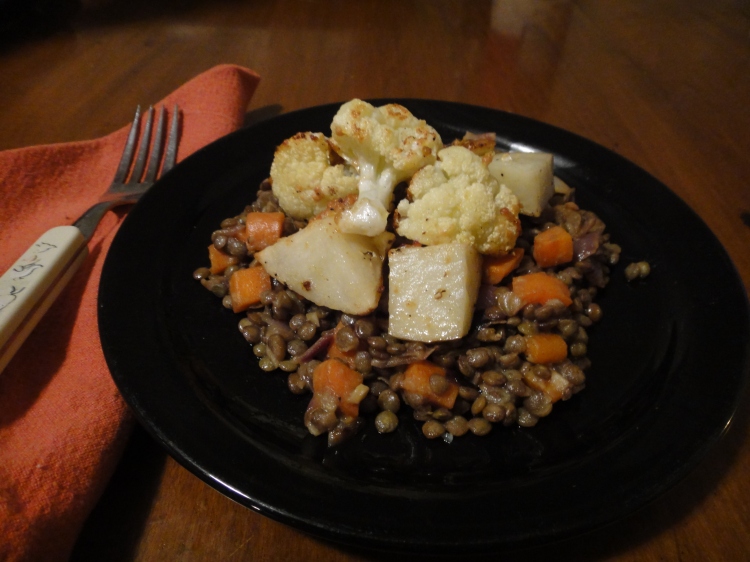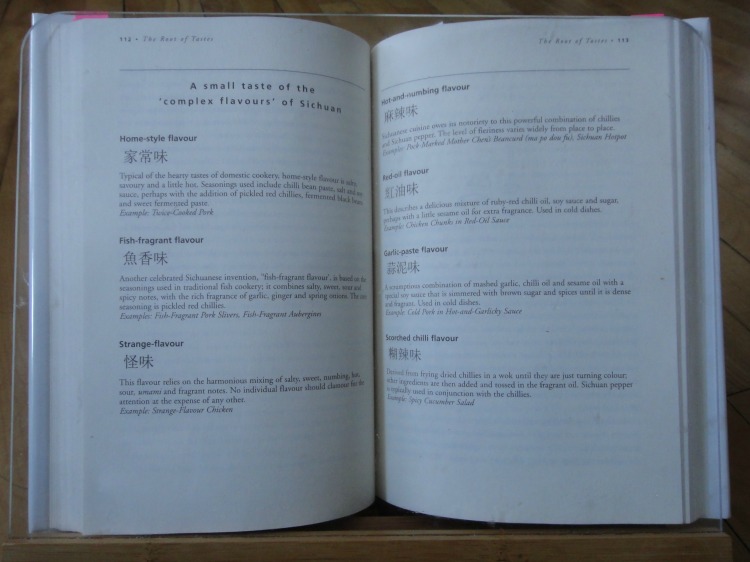 Edible: An Adventure into the World of Eating Insects and the Last Great Hope to Save the Planet is a mouthful, and entomophagist Daniella Martin’s plea for the world to eat more insects. The first two thirds of the book are Martin’s case for eating bugs. She compares the energy and space required to raise the mammals we most commonly eat to the same requirements for bugs. The remainder of the book describes how to raise your own bugs, a detailed glossary of edible bugs, and then the final part of the cycle: recipes to get the bugs on to your plate (Hakuna Frittata is by far my favorite, and Crickety Kale Salad sounds like just the thing for trendy farm to table menus, but I haven’t tried either yet).
Edible: An Adventure into the World of Eating Insects and the Last Great Hope to Save the Planet is a mouthful, and entomophagist Daniella Martin’s plea for the world to eat more insects. The first two thirds of the book are Martin’s case for eating bugs. She compares the energy and space required to raise the mammals we most commonly eat to the same requirements for bugs. The remainder of the book describes how to raise your own bugs, a detailed glossary of edible bugs, and then the final part of the cycle: recipes to get the bugs on to your plate (Hakuna Frittata is by far my favorite, and Crickety Kale Salad sounds like just the thing for trendy farm to table menus, but I haven’t tried either yet).
Martin’s case for eating bugs is well organized and supported. The numbers that really speak in favor of insect proteins are the food, water and space requirements:
- 1 pound of beef = 10 pounds of feed, 1,000 gallons of water, 200 square feet of pasture (2 acres per cow)
- 1 pound of pork = 5 pounds of feed, 600 gallons of water, 175 square feet of pasture (⅔ acre per pig)
- 1 pound of chicken = 2.5 pounds of feed, 150 gallons of water, 75 square feet of pasture (100 square feet per chicken)
- 1 pound of fish = 1.5 pounds of fish meal, variable amounts of water, considering spawning
- 1 pound of insects = 2 pounds of feed, 1 gallon of water, 2 cubic feet of land space (18-19)
Martin also adds that “since most bugs don’t require deboning, there are also big savings in energy and water on the processing end, and because they require far less space to raise and thus can be farmed in an urban area, the fossil fuel required to transport them is minimal.” (18) So bugs take up almost no space, require barely any water, and can be deep fried?? It’s a wonder insects aren’t taking the place of popcorn chicken on menus across the country.
Besides the very limited space and energy requirements, crickets can reproduce incredibly quickly: “A cow gives birth to one calf per year. In that same time, a pig can produce twenty-five to thirty piglets, and a chicken lays three hundred eggs….In comparison to these warm-blooded livestock, a cricket lays around a hundred eggs in her three-month lifespan. Assuming half are male, that makes 50 female crickets, each laying a hundred eggs. After three months, we have 2,500 laying female crickets; in a year, 312,500,000. If 1,000 crickets weigh a pound, that’s 312,500 pounds of cricket in a year, a weight equivalent to 312 cows.” (27-8)
Westerners eating bugs is an important part of more of the world eating them, and the cultures that do continuing to do so. Martin fears that the more Western culture spreads, the more others will adopt the habit of only eating the meat of larger livestock and leave behind their insect eating traditions.
Last year I was able to try cookies made by Bitty with cricket flour. They were delicious, and tasted like any other well made cookies with whole grain flour. Insect food companies in the US are well aware that there are many cultural issues for Americans to get over before insects become a part of our diets. They are smart to begin with flour, which has the same nutritional benefits of whole bugs, without the ick factor. This is another example of insect’s versatility–what other animal protein can also be used as a flour? With all our culinary innovations, beef crust pizza, chicken bread, and pork flour pancakes are nowhere to be seen (except maybe at a Guy Fieri restaurant, but that doesn’t count as real food).
Part of what gets you on Martin’s side is that her argument is so reasonable. She doesn’t expect insects to take the place of the meat we consume, or even get them in every kitchen. There is no such one food solution to sustainability. But insects should be part of the mix, right alongside poultry, game, pork, beef, seafood and vegetal protein options. As she states, veganism is “not a realistic choice for all or even most humans living on earth” because of cost and lack of year round access to plant foods. And I wholeheartedly agree with Martin that “it’s certainly not fair to expect someone who struggles to get enough to eat to limit their own biology according to a philosophy that nature itself doesn’t seem to echo.” (170)
Especially for those wary of eating insects, Edible is a great introduction to the concept. Martin’s style of writing is witty and conversational, and she includes enough numbers to to prove all her points but not so many to make you dizzy. With books like this that try to be both an introduction and a case for a certain diet or way of life, (such as In Defense of Food), shorter is always better. And if you are so moved by her case to start eating bugs, the recipes are right there to get you started. In an increasingly resource strained world, it’s important to keep all our options open. Insects aren’t going to be for everyone, but they should stay on the table.
Further Reading: Your Post-Workout Protein Shake Should Be Loaded With Insects (written by Martin for Slate); her website and blog (warning, lots of bug photos) http://www.girlmeetsbug.com/
 Does anyone else love to bake with bananas, but hate to eat them plain? I used to always pilfer the sad, decaying bananas my roommates purchased for baked goods, but my current household is usually banana-free and I always forget to buy bananas to let them go bad. Tragically this almost caused me to forget about these muffins, which should be hard because they are most definitely my favorite muffins. They are equally wholesome and delicious, and almost pair better with coffee than chocolate chip cookies (but I haven’t reached the point of accepting those for breakfast quite yet). Or the excellent other half to a smoothie breakfast (which is never filling enough for me).
Does anyone else love to bake with bananas, but hate to eat them plain? I used to always pilfer the sad, decaying bananas my roommates purchased for baked goods, but my current household is usually banana-free and I always forget to buy bananas to let them go bad. Tragically this almost caused me to forget about these muffins, which should be hard because they are most definitely my favorite muffins. They are equally wholesome and delicious, and almost pair better with coffee than chocolate chip cookies (but I haven’t reached the point of accepting those for breakfast quite yet). Or the excellent other half to a smoothie breakfast (which is never filling enough for me).




